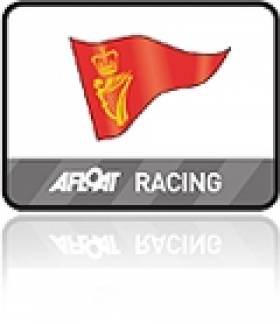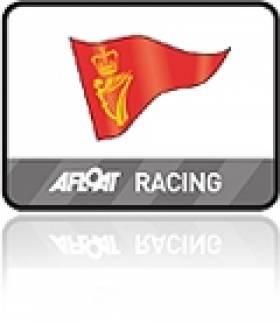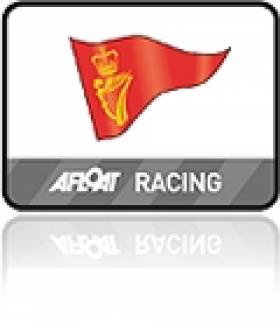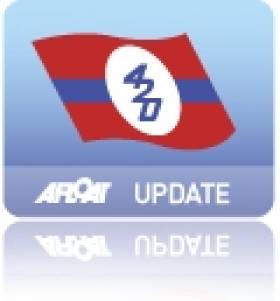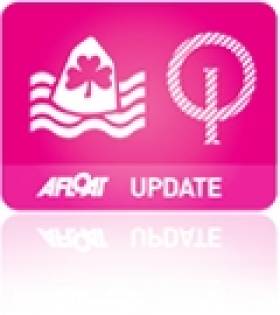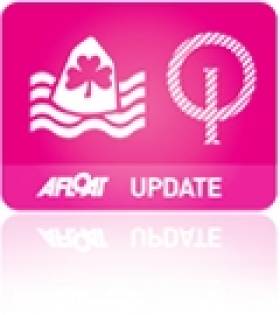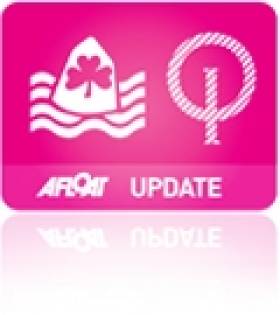Displaying items by tag: Royal Cork Yacht Club
Royal Cork Yacht Club Third in Italian 2K Team Race Event
#2kteamracing – Teams from Howth Yacht Club and the Royal Cork Yacht Club travelled to Porto Ercole, Tuscany for the Italian- Cala Galera leg of the 2014 2K team Racing Circuit, from the 5th to 7th of September. Both teams enjoyed high intensity racing, some very tight matches, exceptional racing conditions, and beautiful scenery.
The Royal Cork team, led by skippers Fred Cudmore and George Kinsgton won 6 of the 9 races in the round robin, over the first and second day of the event. They went into day 3 of the event in second place, and faced the highly experienced 2K racers, Yacht Club Costa Smerelda in the first to two wins semi final. Racing went down to the wire, but unfortunately YCCS won 2-1. The Rebel army won their petit final, against the British Team Magnum, finishing the regatta in 3rd place. YCCS stormed on to beat the Rome Racing Team in the final.
Howth Yacht Club, competing at their first 2K event, had a slow start getting in only two races of their round robin on Friday. With more breeze on day 2, skippers Simon Rattigan and Geoff Tait were more in the groove of the 2 v 2 racing and they went on to win 4 from 7 of their races. On day 3, the team had the best seats in the house to watch the gold fleet finals, from their luxurious changeover yacht. They then took part in the "king of the castle" silver fleet final, and finished the event in 9th place.
The Royal Cork were represented by: Fred Cudmore, Emma Geary, Philip O'Leary, Sarah O'Leary, George Kingston, Ian Mc Namee, Philip Mc Glade, and Eimear O'Leary.
Howth were represented by Simon Rattigan, Aoife English, Ross Mc Donald, Rachel O'Brien, Geoff Tait, Lisa Tait, Rob Kerley and Jess Armstrong.
Full event report and results are available here
Royal Cork Yacht Club Prepares for Cork Harbour Autumn League
#rnli –The Autumn Series at Royal Cork Yacht Club is rapidly approaching writes Claire Bateman. Once again the Cork Harbour club is extremely fortunate to have CH Marine sponsoring the series, one of the premier highlights of the sailing season at the club that always attracts large numbers of sailors from a wide variety of clubs from around Ireland. CH Marine have sponsored this event for a number of years and have enabled the club to stage the magnificent and popular event that it is.
This year the Autumn Series will commence on Saturday, September 27th with the first two races and will follow with two races each day on October 5th, October 12th, October 19th and finishing on October 25th. Racing will commence each day at 11.55hrs. and will be followed each day by food, live music and daily prize giving. Notice of Race and Entry forms downloadable from www.royalcork.com.
On the the final day of racing the Autumn Series dinner and overall prize giving will be held at the club commencing at 19.30hrs. As always, this event sells out very quickly so early booking is advisable.
Subject to availability, complimentary berthing on swinging moorings or marina berths will be provided to yachts visiting Crosshaven from Friday, September 19th to Monday, October 27th 2014. For berthing arrangements please contact Mark Ring at Royal Cork office 353(0)214831023.
Earlier this year, a long standing and very highly regarded member of the Royal Cork Yacht Club and Commodore of SCORA, Vincent O'Shea, passed away. Vinny as he was fondly known to alL, is greatly missed by all who had the great pleasure of knowing him and also those who sailed with him. Now the Royal Cork Yacht Club is delighted to advise that Vinny's family and the crew of his beloved Yanks and Ffrancs have come together to present the club with the Vinny O'Shea Perpetual Trophy to be awarded for the Boat of the Month over the Autumn Series. This magnificent trophy will be awarded this year and each following year to the best overall performing yacht in the Royal Cork Autumn Series. The club wishes to take this opportunity to thank Vinny's family and crew for presenting this wonderful trophy that will continue to honour the memory of a great man, friend and sailor for many years to come.
#rcyc – At yesterday's RCYC 'At Home' Regatta, Admiral Pat Lyons took the opportunity to highlight numerous Royal Cork YC championship winners from the Club in 2014 writes Claire Bateman. To underline this point, almost as Pat Lyons was speaking, a further winner was announced when top Cork Harbour youth Johnny Durcan lifted the 4.7 class title at the Irish Laser Nationals on Belfast Lough.
Racing started in a south westerly breeze for day two of MSL sponsored Regatta With the sun shining in the morning, it produced sparkling sailing conditions for the National 18s who were having their South Coast Championships as part of at the At Home weekend.
Not so lucky were the dinghy fleets sailing on the Curlane Bank as the forecast cloud arrived overhead providing what photographers call slack light. The sun was there but behind the clouds. However, the stable breeze made for great racing on the day.
By the time the sailors had returned from racing the patchy mist and light rain had begun to make its presence felt but this did not deter them and the general attendance from enjoying the superb afternoon tea of sandwiches and scrumptious cakes aplenty and then on to enjoy the various activities. The children took the crab fishing competition very seriously and stood over the measurer, Stuart Daly while he carried out the onerous task of measuring the crabs while minding his fingers. There was face painting, a tug o war for the young sailors with the girls team showing their prowess to beat the boys. There was the serious business of the Boules match for former Admirals and the current Admiral, cheered on by the large attendance and then on to the prize giving.
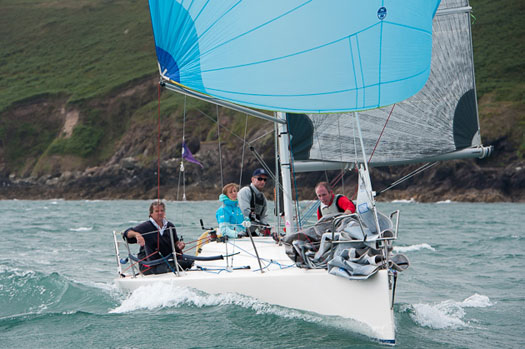
Admiral Pat Lyons thanked the Sponsors, MSL Motor Group and he highlighted in his speech the number of championship winners from the club and pointed out that even today we had two further winners when Johnny Durcan won the 4.7 class at the Irish Laser Nationals. Rebecca O'Shaughnessy took First Lady in the 4.7 class and Cian Byrne took second place in the Radial Class.
The Admiral then presented all the many prizes and trophies with assistance from Rear Admiral Keelboats, Kieran O'Connell, and Rear Admiral Dinghies, Celine McGrath. Then at the conclusion of the prize giving as the rain and wind had become more pronounced and all the events had successfully taken place, the good humoured attendance started to make their way home having had a thoroughly enjoyable At Home at the club.

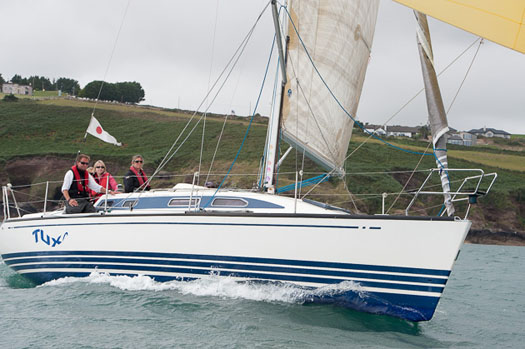
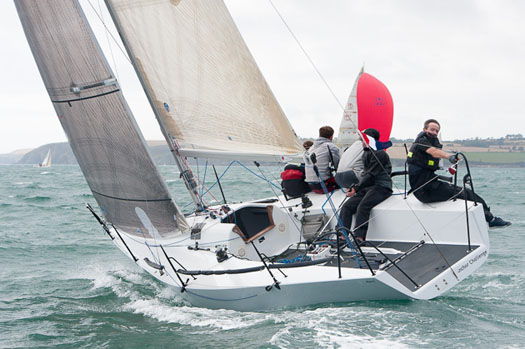
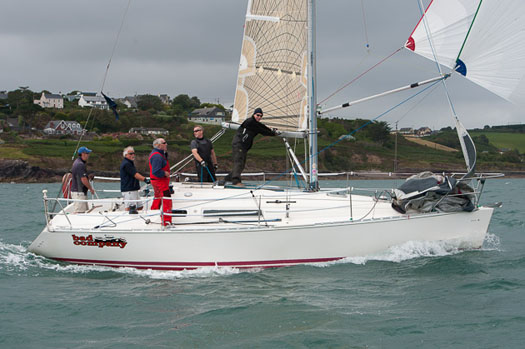
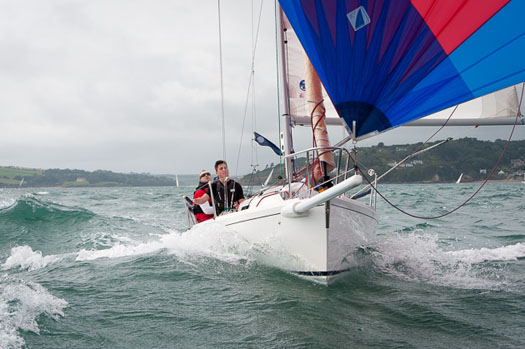
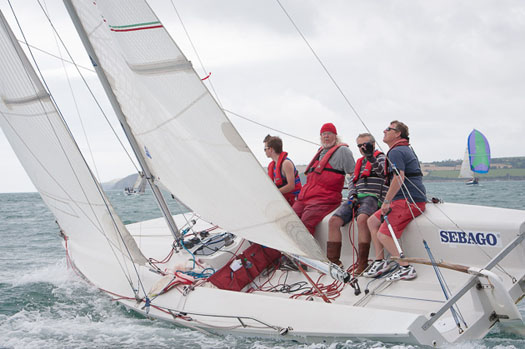
#rcyc – Once again Royal Cork Yacht Club is very proud to welcome back the prestigious sponsorship of the MSL Motor Group for the annual At Home Regatta weekend writes Claire Bateman. The club is looking particularly resplendent with the latest Mercedes models on display and with the Mercedes flags and colourful bunting throughout the grounds there is a particularly festive atmosphere around. The At Home weekend is one of the highlights of the year at the Royal Cork Yacht Club when members and their families gather to renew old acquaintances, meet new friends and simply to enjoy a great weekend.
All ten of the National 18s were sailing for the South Coast Championship and as usual they were going hell for leather with no quarter sought nor given. Over twenty cruisers including 1,2,3 and whitesail got in a great day of racing. While in the dinghy fleets there were four Fevas, five Toppers, five Lasers and more Optimists than one could count.
Prior to racing proper some of the younger sailors were brought out for practice in the river and given the wind strength they sailed with reefed sails, not a thing one would see very often. However, the highlight was to see the two Topaz dinghies named 'Christine' and 'Spellbound', so generously donated to the Club by Dr. Raymond Fielding, standing out in their performance ahead of the dinghy fleet.
Racing will continue tomorrow (Sun) and no doubt there will be a scramble ashore after racing to partake of the programme of festivity and to enjoy the usual scrumptious afternoon tea kindly organized by the Admiral's Lady Ann, and her band of willing helpers.
#1720 – National 1720 sportsboat Champion Anthony O'Leary on Antix retained his title after three superb days of sailing in a 14–boat fleet at Baltimore Sailing Club, West Cork last weekend. Full results sheet downloadable below.
Racing commenced on Friday in glorious sunshine after a short postponement on shore, with the full 3 scheduled races being sailed in light winds west of Sherkin Island. Race 1 was won by Robert O'Leary's, Jacobs Bar and Races 2 & 3 by Anthony O'Leary's, Antix.
Day 2 again brought light winds but race officer Richard Leonard and his team did a great job, getting all 3 races finished despite a massive wind shift in race 3 with the final run turning into a beat mid way down the leg. Griffiths/Cook's Smile N'Wave won race 1, with Antix again wining the final 2 races of the day.
Sunday, the final day of racing saw a significant change in weather conditions with the crews waking up to rain and clouds that hadn't been seen in West Cork for some time. The race officer was up early to check the conditions with word coming ashore to the crews that sailing was going ahead outside the harbour.
Race 1 started after a general recall in 15 – 18 knots with line honours going to Denis Murphy's Aquatack (helmed by Mark Mansfield). The 8th and final race of the day and championships was sailed in winds gusting 25 knots giving spectacular plaining conditions with plenty of broaches and kites being shredded with Durcan/O'Shea's T-Bone taking line honours and second overall to Anthony O'Leary's Antix, with Robert O'Leary's Jacobs bar taking 3rd overall.
The next port of call for the class is Royal Cork's October league.
Royal Cork's McCann & Walsh Win 420 Nationals Trophy at RStGYC
#420sailing – After nine great races on Dublin Bay, Royal Cork Yacht Club's Peter McCann and Arran Walsh claimed the 420 Nationals trophy last weekend writes Clodagh Lyttle. The teenagers sailed to victory in style, winning four races over the three day event hosted by the Royal St. George Yacht Club. 15 boats competed and seven of these were girls pairings. The fleet, aged between 14 and 18 enjoyed the courses set by PRO Richard Kissane. Full results downloadable below as a jpg file.
This result means that there are two homes in Crosshaven who have two National Champions in the family. Last week James McCann, Peter's brother won the Optimist Trophy and earlier this year Nick Walsh, Arran's dad won the Laser Masters Trophy.
McCann and Walsh managed to defeat the ISAF pair Robert Dickson and Sean Waddilove who were 20th in the World Championships in Germany. Similarly Cliodhna Ni Shuillebhain and Jill McGinley won the Ladies Title overcoming Lizzie McDowell and Cara McDowell who came 16th in the ISAFs. The standard of sailing in the Irish 420 fleet is extremely high, as another pair Harry Whitaker and Grattan Roberts also had a great result when they came 20th at the Junior Europeans .
After the prizegiving, 420 coach Ross Killian, Arran Walsh and Bill Staunton took the ice bucket challenge, much to everyone's enjoyment. The 420 sailors prepared two huge wheelbarrows of iced water and poured it on their coach.
The next 420 event is the Leinsters in Wexford Harbour on 13th and 14th September.
Royal Cork's McCann Wins Irish Optimist Title, Kinsale's Ó Suilleabhán is Junior Champion
#optimist – Royal Cork's James McCann built on his fine European Optimist performance in Dun Laoghaire a month ago by winning the Irish Optimist dinghy class title on his home waters of Cork Harbour yesterday writes Claire Bateman.
Scroll down for photo gallery of the event below by Bob Bateman.
The wind gods left the best wine for last and it certainly tasted good on the last day of racing at the CH Marine Irish Optimist National and Open Championships wirtes Claire Bateman. The wind was up to about 15 knots most of the time and the sun was shining most of the time. What more could anyone ask! PRO David O'Brien again set the course for the Senior and Junior Fleets on the Eastern Bank and to cater for the north west wind set the committee boat close to the Aghada shore. Two races were sailed for both Senior and Junior fleets and it was all over by 14.30hrs to allow competitors make their way home. However a number of protests were received and the Protest Committee was convened for hearings.
Meanwhile , PRO Eddie Rice's Regatta Fleet again sailed on the Curlane Bank. Not all of the 52 competitors in this fleet sailed today as the conditions were a bit trying for the inexperienced.
The scene after racing had finished was a veritable hive of activity as the competitors, their families and helpers rushed to get away after the prize giving. However, it soon became apparent this was not to be as a protest was going ahead and meant a delay was unavoidable. As many people had ferries to catch and long journeys this meant they could not wait for the prize giving and among these was the new Open Senior Champion Vita Heathcote RIYMYC.
The array of prizes handed out was huge and as the prizes for today were also sponsored by CH Marine Nicholas Bendon MD of the company was there to do the honours in presenting these prizes.
In the Regatta Fleet the overall champion is Moss Simmington RStGYC .
1st Junior Silver Rory O'Sullivan RCYC. 2nd Junior Silver Conor Gorman NYC. 3rd Junior Silver James Hassett RCYC. Best Local Sailor Silver Fleet Sophia McKeown RCYC. Junior Silver First Girl Kate Fahy LDYC/RStGYC.
1stJunior Gold, National and Open Champion.Michael ÓShuilleabháin KYC. Best under 11 and Best Local Sailor Junior Gold Fleet Robert Keal RCYC. Best under 10 Eve McMahon. Best under 9 Trevor Bolger.\
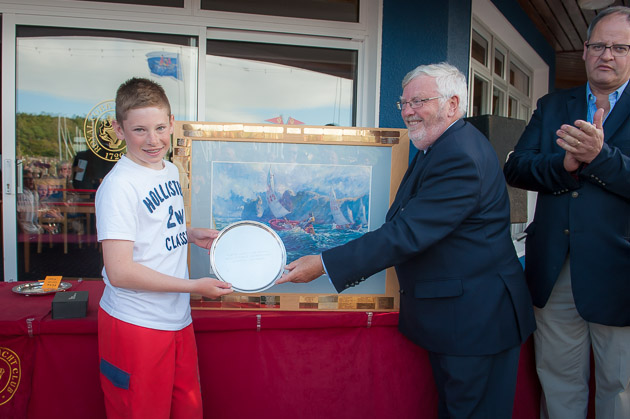
Iriah Senior National Champion James McCann receiving his award from Admiral Pat Lyons
It was then the turn of the Senior Fleet to receive their prizes:
1st Senior Silver Jack Fahy LDYC/RStGYC. 2nd Silver James Spillane RCYC. 3rd Senior Silver Emily Whitaker RCYC.

Vita Heathcote First Senior Gold and Open Champion. Pic Robert Bateman
1st Senior Gold and Open Senior Champion Vita Heathcote RIYMYC. 2nd Senior Gold Emilia BoyleRIYC, 3rd Senior Gold, Irish Senior National Champion and Best Irish sailor at Optimist European Championships James McCann. Senior Gold First Girl and best under 13 Irish Clare Gorman NYC.
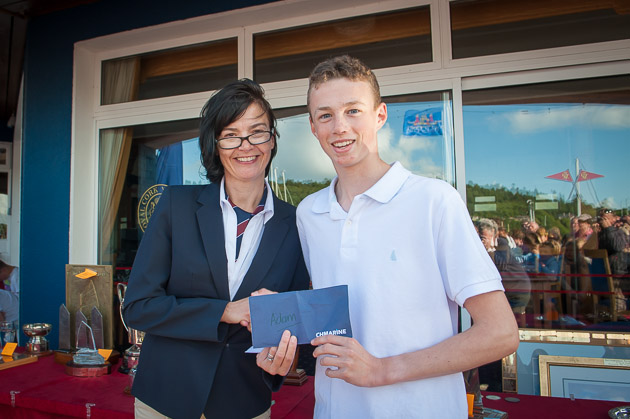
Rear Admiral Dinghies Celine McGrath, making a presentation to Adam D'Arcy in recognition of his Silver Medal win at the International Topper Class World Championships, Pic Robert Bateman
The 2015 Irish Optimist National and Open Championships will take place at Skerries Sailing Club
See Irish Optimist Sailing Gallery by Bob Bateman below. Full Results HERE


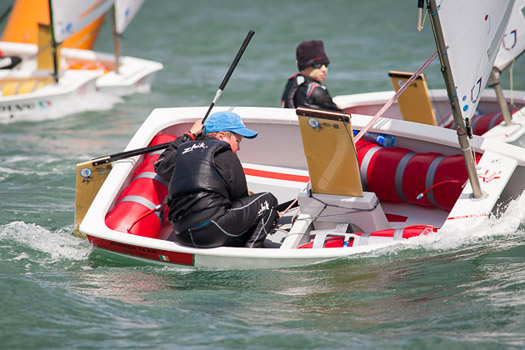


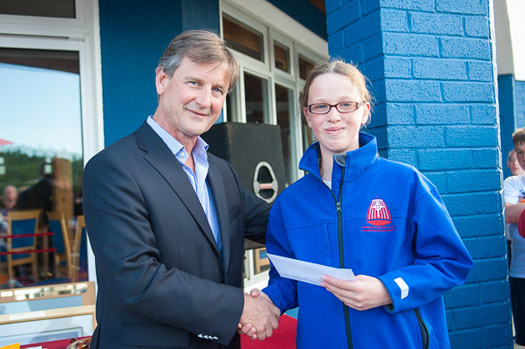
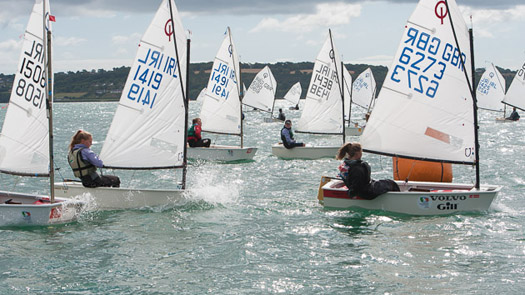
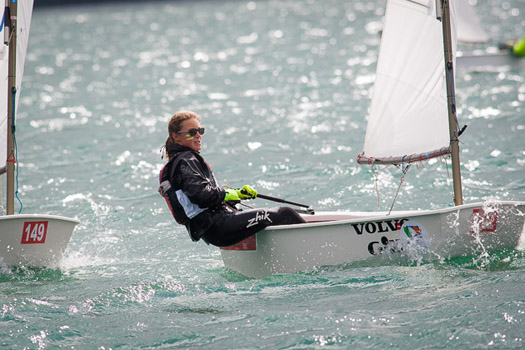
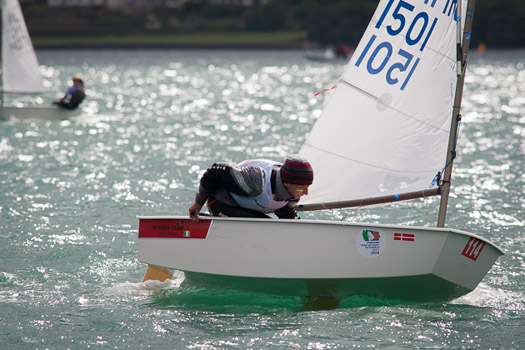

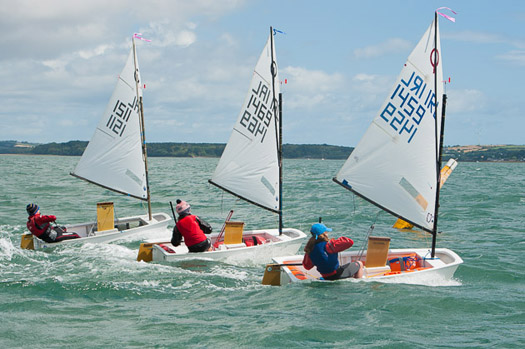
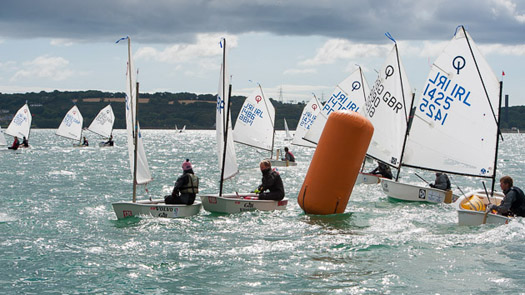
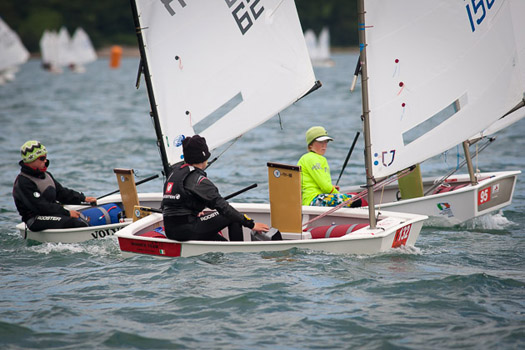

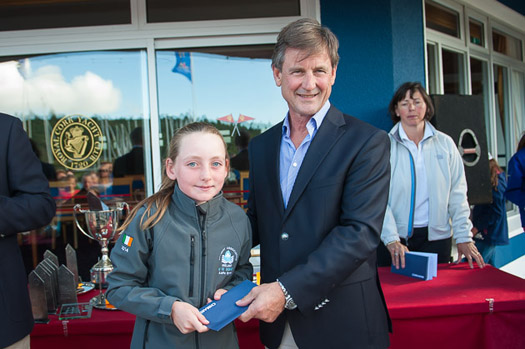
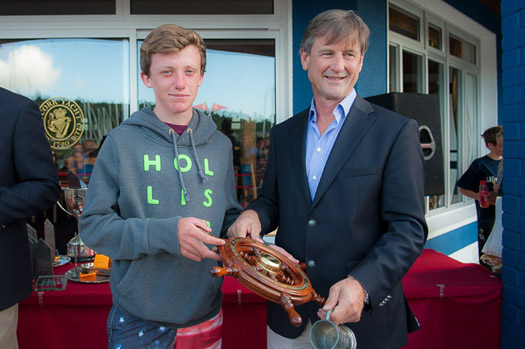
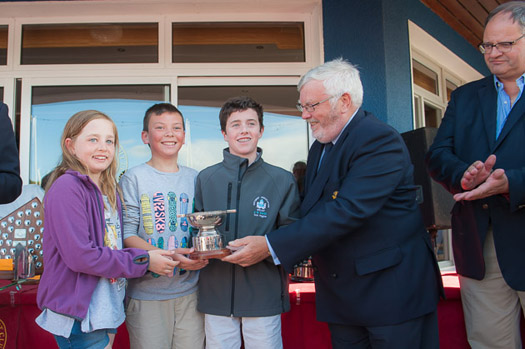
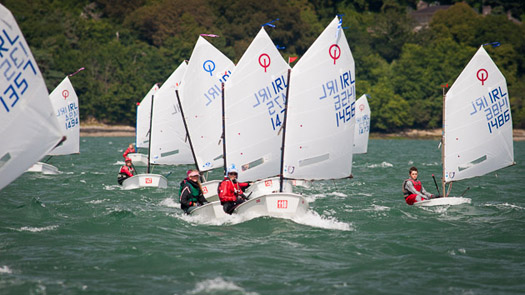

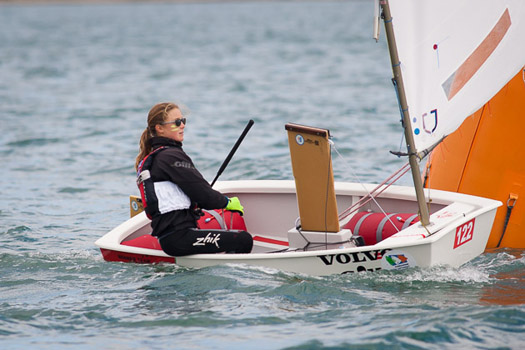

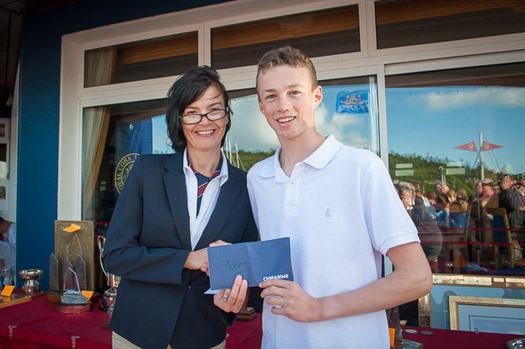
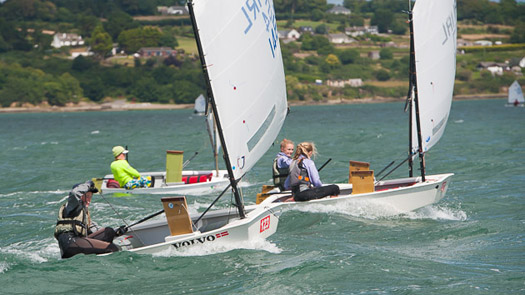
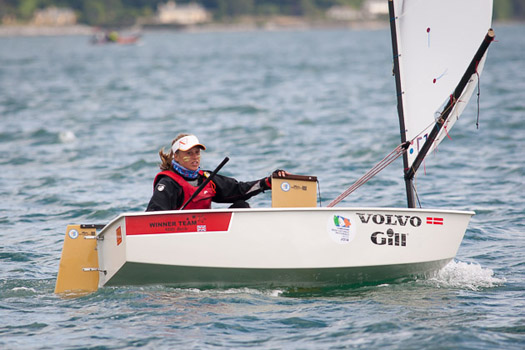


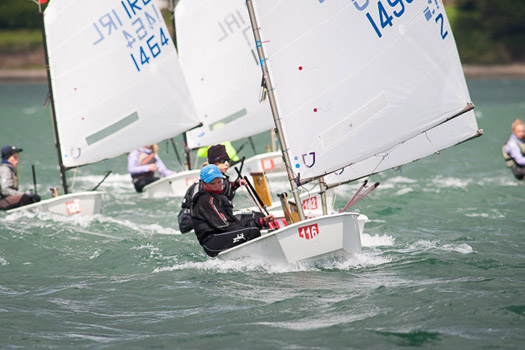
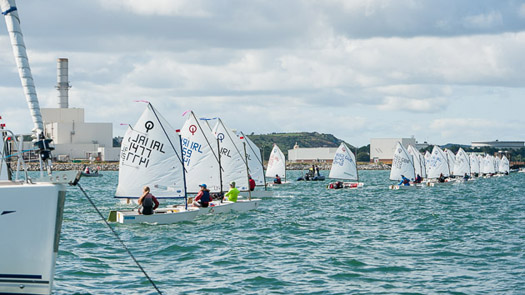

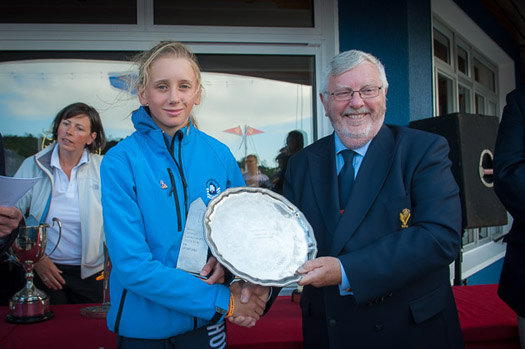


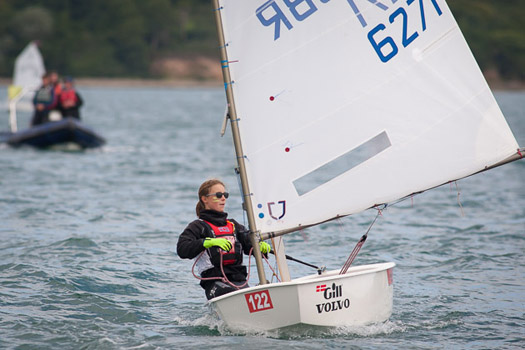
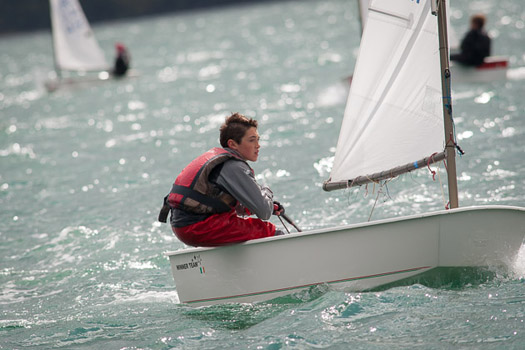


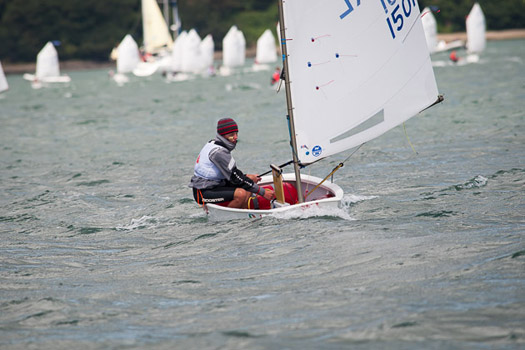
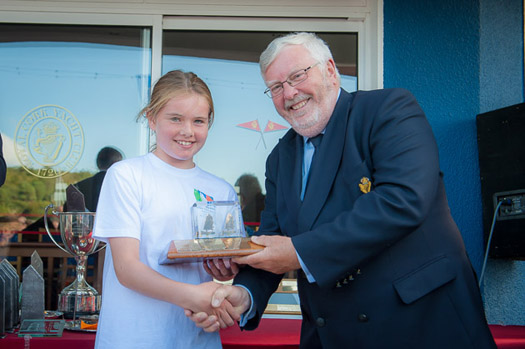
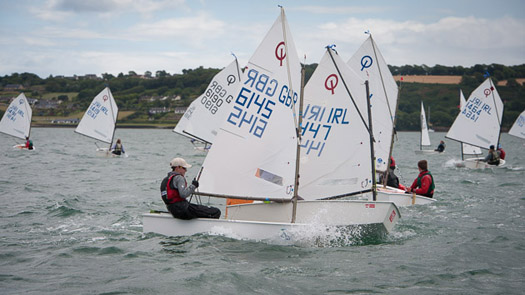

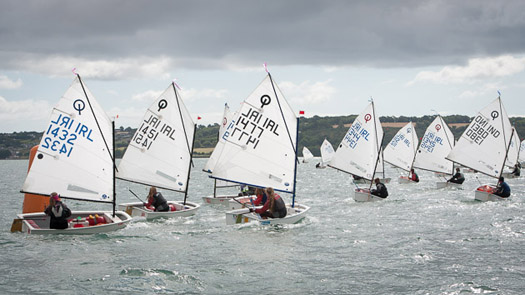


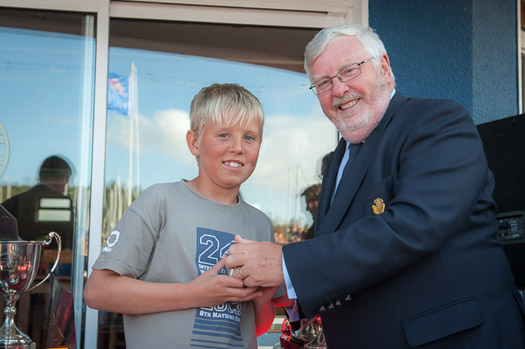
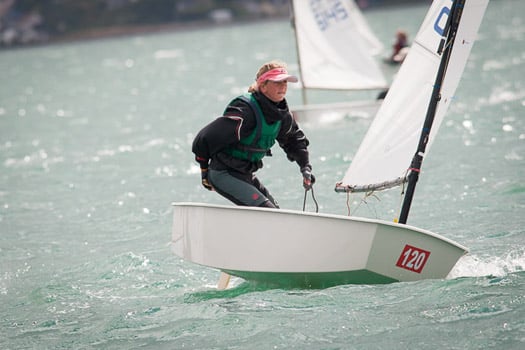
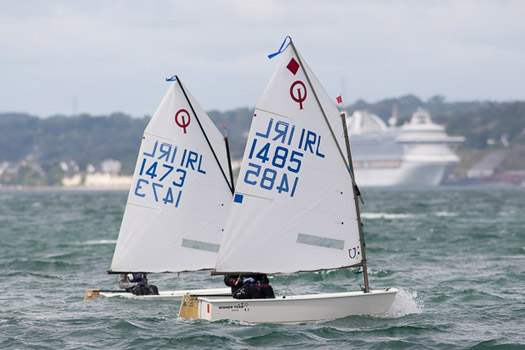
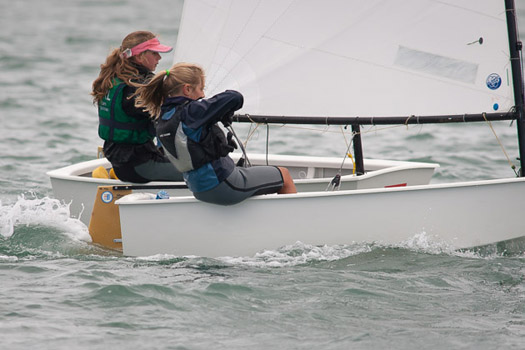
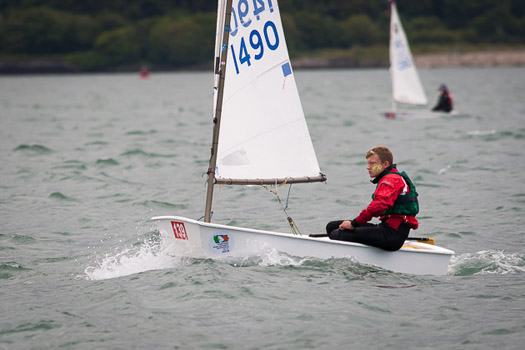
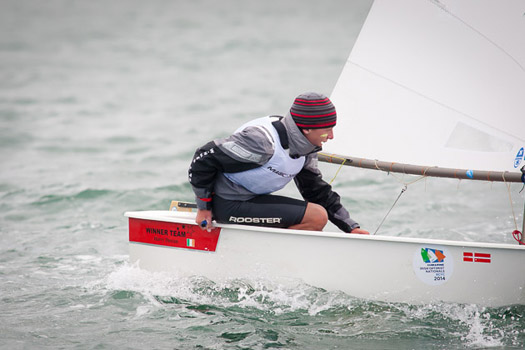
Skerries SC Sailor Leads Into Final of CH Marine Optimist Nationals
#optimist – There's an Interesting scenario emerging for today's finale of the CH Marine Irish Optimist National Championships at Royal Cork Yacht Club writes Claire Bateman.
After eight races and one discard Peter Fegan SSC leads the Senior Gold Fleet on 46 points. Solid consistency appears to have paid off well for Peter up to now. He is currently 3 points ahead of Vita Heathcote RIYMYC, who took the Volvo Gill Optimist National Champion title in the Senior Fleet (Main) in early August this season at Weymouth. Lying third is Clare Gorman NYC.
The Junior Gold Fleet is led by William Heathcote, having overtaken the overnight leader, Micheál Ó Suillebháin KYC followed by Tom Higgins RStGYC.
Currently leading the Regatta Fleet is Moss Simington RStGYC with Ben McMullin LRYC second and Ben Graf LRYC in third place.
Racing today for Senior and Junior fleets took place on the Eastern Bank off Aghada. The wind was due west and it varied from 5 to 6 knots but could rise to 10 to 12 knots but with an ebb from a 3.8m tide pushing the fleets out towards the windward mark it was very difficult particularly for the younger competitors to stay behind the start line. This resulted in general recalls and subsequent starts under black flags. This resulted in many competitors, particularly in the Junior fleet, being penalised under this rule. However, all in all it was a very good day of racing with the wind being stronger than it had been for the first two days of the event. The Regatta fleet again sailed on the Curlane Bank where they had a good breeze as well.
The onshore crews were in their best form ensuring the smooth running of the event and there was an excellent almost carnival atmosphere about the club when the fleets were returning to shore to enjoy hot soup and to make sure all would be in readiness with their boats for the final races of the event.
Tomorrow should make for a very exciting finale to the Championships. Very few points are separating the leaders in all divisions and who can say what may happen. It would be a foolish person indeed who would make any predictions about tomorrow with any certainty.
The Royal Cork hosted their first Oppy Nationals in 1994 some twenty years ago, their club fleet having grown to fifty four and a major reason for this growth had been a structured training programme encompassing absolute beginners, improvers and those with some skills. At this week's event, the standard is so high that any one of thirty competitors could win a race in the National Championships.
Frustration at CH Marine Optimist Nationals Day Two
#optimist – Day 2 of the CH Marine Irish Optimist National Championships saw a great buzz with competitors arriving at Royal Cork Yacht Club for today's racing in the CH Marine Irish Optimist National Championships in Crosshaven writes Claire Bateman.
Today was very much down to business with the sailors feeling more familiar with their surroundings and having had the experience of the first day of racing over them. Today the racing for the Senior and Junior fleets was to the east of Roches Point and the Regatta fleet once again raced on the Curlane Bank.
Off Roches Point the racing commenced in a northerly breeze gusting at irregular intervals between 5-6 knots with stronger puffs of some 10-12 knots. These would last for a few minutes and then ease off. Direction remained steady enough given the pulsing pattern of the breeze.
As usual, Main Fleet Juniors started racing first. The Senior Fleet started their first race after a short postponement and, after a general recall, the next start took place under a black flag. The breeze, previously steady in it's pattern started to shift and die. As the race got away a new breeze clicked into place with a greater westerly component. This was to set the pattern for most of the day. The Seniors played a game of snakes and ladders with the new breeze with some of the sailors not finding the dramatic shifts very favourable to them.
The second race had darkening skies with the breeze having solidified into a good range for racing. It was still gusty but there was a bit more bite for the experienced sailors to work with. This start was also difficult with a general recall and the resultant black flag appearing for the next start. Tide and line bias conspired against the sailors and many fell foul of the black flag at the pin end. This was somewhat frustrating for the affected sailors as this was the first good breeze they had seen during the championship so far.
The third race started with all the sailors more cautious approaching the line. Well into the first beat the wind dropped and shifted leaving many boats trickling very slowly into the windward mark with another opportunity lost to the variable conditions. This set the tone for the remainder of the race with the sky brightening but the wind staying light. The Race Officer then took the decision to shorten the race and the sailors commenced their long haul back to the club house.
In the Main Fleet Junior Division Michéal O'Suilléabháin leads on 13 points while in second place is UK visitor William Heathcotte one point behind, next is Spanish visitor Arnau Gelpi on 15 points and in fourth place is Tom Higgins of RStGYC on 19 points. These results are after five races with one discard.
Meanwhile, the Regatta Fleet had been enjoying excellent racing with Race Officer Eddie Rice on the Curlane Bank. They were sailing in a light breeze that occasionally surprised the young sailors by gusting to about 12 knots. It must be said, though, it is very easy to see that the future of Optimist sailing looks very bright indeed having watched some of these young competitors at the start and the competence shown when the breeze strengthened and some capsizes occurred. Some were a little nervous of course but everyone coped very well and they are a credit to their trainers and coaches. They really enjoyed themselves and even managed a smile for the camera!
They came ashore in fine form and once they had their boats safely and neatly tucked away were preparing for a special visit to the Crosshaven RNLI station.
Forecast for today (Sat) is similar with perhaps a stronger looking wind profile as the day progresses.
#topper – Royal Cork sailor Adam D'Arcy has won Silver at the Topper World Championships in Pwllheli, Wales. The Fermoy sailor beat 132 competitors from France, Great Britain, India, Japan, Malta, and South Africa. It's a second youth silver for Royal Cork in as many months. In July, ISAF youth silver went to D'Arcy's club–mate Seafra Guilfoyle in the Laser radial class.
As Afloat reported earlier, a total of 11 races were sailed during the regatta in a mixture of weather conditions that concluded this afternoon.
The 16–year–old had a total of 27 points to be on equal points with winner Calum Rosie from the UK, however agonisingly Ireland missed out on Gold on the count-back rule. Last year Ulster sailor Liam Glynn won the world title when the regatta was held in France.
The Gwynedd championship culminated today with four races with podium positions alternating after each race. It made for a nail biting climax to see who would be crowned World Champion. In the end it was Calum Rosie who took the final race win and with it the World Title.
Waterford's Geoff Power finished 10th overall while Peter Gilmore, Heather Spain, Conor Quinn and Hugh Perrette all finished within the top 30.
Top 5 Topper World Championship Results
1. Calum Rosie, UK – 27 pts
2. Adam D'Arcy, Ireland – 27 pts
3. Tom Walker, UK – 28 pts
4. Bella Fellows, UK – 32 pts
5. Oliver Blackburn, UK – 37 pts
Full results here



























